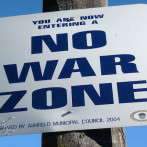Trust Me
As a business owner, there is an interesting corollary between hats and trust. In that, I mean the number of hats I feel compelled to wear in my business is oftentimes directly related to the level of trust I place in those that work in and for my company. Or, more accurately, do not place. My perceived workload as well as my concern about the health and future of my business are nearly always a barometer of how well I am trusting the vibrant resources in my midst. Trust is a big deal in business. It cannot be commanded nor intellectually generated. Once established, it can disappear in a flash. Trust is experienced not in the mind, but elsewhere. It can inform the mind, but it’s held in the heart. Which is why it can be such a challenge to foster in business. Workplaces are not traditionally environments where we allow our heart access. The truth is, if you want to activate trust within a company, the human heart is going to need to be involved. Otherwise, it’s simply a mental concept, impotent and without value. The best way to understand how to develop trust in others is to understand how it develops within ourselves. While our openness and ability to trust varies dramatically, the elements that foster it are shared. Consistency, honesty and empathy are critical to building trust. Whereas inconstancy, duplicity and indifference will prevent it from developing and ravage what trust exists. There is no tactical game plan for building trust in a company and without it, the true potential of any given enterprise will be largely unrealized. Leading is about vision, mission and action. Most importantly, however, it’s about developing trust within oneself and within the hearts of the people of the company. The level of trust each person experiences within the organization for the organization, will directly impact their work and performance. Trust engages the heart and spirit. It’s the vital component between lackluster and good, good and great. Leaders begin the work of building trust in others by first trusting others. Need trust? Becoming aware of that 24/7 security vigilante otherwise known as your ‘ego’ will help. Discover 7 Ways to Quiet Security-Seeking Egos in the Workplace right...
Read More




